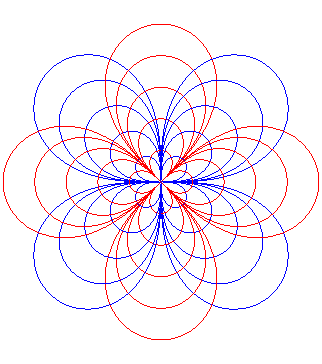Author Archives: edrotaiqanalyt
The Analytics World
The Analytics World has wonderful historical moments and aspects to think and reflect about. There are multiple things to use in the current demand of solutions based on analytics in data-drive organizations. These examples of the historical experience show part of the analytics evolution:
- Brownian Motion was described by Brown R. (1827) used by Einstein (1905), Wiener (1961) and Black and Scholes (1973)
- Von Neumann and Morgenstern (1944) wrote “There is no point in using exact methods where there is no clarity in the concepts and issues to which they are to be applied.”
- Norbert Wiener (1961) wrote “ The theory of linear prediction and of non-linear prediction both involve some criteria of the goodness of the fit of the prediction. The simplest criterion, although by no means the only usable one, is that of minimizing the mean square of the error. This is used in a particular form in connection with the functionals of the Brownian motion which I employ for the construction of non-linear apparatus,…”
Aspects to consider in a Data Analytics Journey to add value to organizations-society:

1.Everyone can learn and apply Business Analytics, the journey for personal development in this discipline requires several aspects to consider: discipline, motivation and desire to keep a lifelong self-learning process.
2.Business analytics is not to press buttons and to get magic solutions. It is a systematic process that requires a lot of research motivation and capacity to connect models with reality.
3. Big Data Analytics is the application of the Analytics Process to a particular type of data that is Big Data. You cannot go through Big Data Analytics if you do not understand Analytics and Business Analytics processes.
4. “The goal for analytics is to make better decisions. However, while many organizations collect data and some organizations engage in analytics, few organizations link their analytics activities to their decision making.” How to make better decisions and get better results, Tom Davenport February 2010 Harvard Business Review
Your interest and development in the field of Data Analytics is related to
- quantitative disciplines for business decision-making support, in understanding the role of data/technology in organizational problem-solving processes.
- self-learning and capacity to dig deeper every topic in an ongoing way to follow to enhance expertise. Every topic is very wide/deep and requires extra effort to master it.
- dealing with data, programming, statistics, modeling process and information systems.
- the search of the answer to the questions why/what/where/HOW regarding problems resolution.
- testing several options to solve problems and experiment with tools and concepts. Maintaining curiosity and engagement in looking for alternatives to find solutions to problems. A problem can have several ways to tackle it.
- a commitment to try, try, try,… in order to refine the answers in every opportunity that you have new data, algorithms, methods, techniques.
The learning curve can be different for everyone, it depends on individual and organization background in:
1. Data manipulation and work in quantitative problem resolution.
2. Courses in statistics/applied math/computer science/business.
3. Levels of using specialized tools for modeling purposes and exposure to a programing language.
4. Self-learning and problem solution orientation.
5. Self –driven to find solutions to problems based on the search of using the best possible method and technique available.

Beautiful reflections about Data Analytics
- “In our work with dozens of companies in six data rich industries, we have found that fully exploiting data and analytics requires three mutually supportive capabilities… First, companies must be able to identify, combine, and manage multiple sources of data. Second, they need the capability to build advanced analytics models for predicting and optimizing outcomes. Third, and most critical, management must possess the muscle to transform the organization so that the data and models actually yield better decisions.” Making Advanced Analytics Work For You A practical guide to capitalizing on big data by Dominic Barton and David Court Harvard Business Review October 2012 pp 78-83
Traps in Reason and Intuition
- “The Confirming-Evidence Trap: You’d better not let that conversation be the clincher, because you’ve probably just fallen victim to the confirming evidence bias. This bias leads us to seek out information that supports our existing instinct or point of view while avoiding information that contradicts it.
- The Estimating and Forecasting: Traps Making estimates or forecasts about uncertain events, however, is a different matter. While managers continually make such estimates and forecasts, they rarely get clear feedback about their accuracy.” John S. Hammond, Ralph L. Keeney, and Howard Raiffa The Hidden Traps in Decision Making Harvard Business Review January 2006
- “The problem is that most companies are not succeeding in turning data into knowledge and then results. Even those that do, are doing so only temporarily or in a limited area” Thomas H. Davenport, Jeanne G. Harris. David W. De Long, Alvin L. Jacobson, Data to Knowledge to Results: Building An Analytic Capability California Management Review Vol 43, No. 2 Winter 2001

Analytics has been forever
“In the years since the mid 1950’s a trend toward a new and more scientific approach to the solution of business problems has been developing. It stems from methods first suggested by the advocates of “operations research.” But, it is already apparent that by drawing in depth both on mathematics and on social sciences, and by utilizing intensively the high-speed electronic computer, researchers are beginning to give to the decision-making process a scientific base akin to the established methods which have long provided the bases for research in physics, biology, and chemistry.”
New Decision –Making Tools for Managers. Edited by Edward Bursk and John Chapman, The New American Library, New York 1963
Gavyn Davies Does the Maths: How a Statistical Formula Won the War
“By 1941-42, the allies knew that US and even British tanks had been technically superior to German Panzer tanks in combat, but they were worried about the capabilities of the new marks IV and V. More troubling, they had really very little idea of how many tanks the enemy was capable of producing in a year.”
“One solution was to ask intelligence to guess the number by secretly observing the output of German factories, or by trying to count tanks on the battlefield. Both the British and the Americans tried this, but they found that the estimates returned by intelligence were contradictory and unreliable.”[The Guardian, Thursday July 20, 2006]
The basic idea was that the highest serial number among the captured tanks could be used to calculate the overall total. The German tanks were numbered as follows: 1, 2, 3 … N, where N was the desired total number of tanks produced. Imagine that they had captured five tanks, with serial numbers 20, 31, 43, 78 and 92. Call the sample size S and the maximum serial number M. (M-1)(S+1)/S By using this formula, statisticians reportedly estimated that the Germans produced 246 tanks per month between June 1940 and September 1942. At that time, standard intelligence estimates had believed the number was far, far higher, at around 1,400. After the war, the allies captured German production records, showing that the true number of tanks produced in those three years was 245 per month, almost exactly what the statisticians had calculated, and less than one fifth of what standard intelligence had thought likely.
“Data mining involves extracting interesting patterns from data and can be found at the heart of operational research (OR), as its aim is to create and enhance decision support systems. Even in the early days, some data mining approaches relied on traditional OR methods such as linear programming and forecasting, and modern data mining methods are based on a wide variety of OR methods including linear and quadratic optimization, genetic algorithms and concepts based on artificial ant colonies.” Author(s):B. Baesens,C. Mues,D. Martens and J. Vanthienen, The Journal of the Operational Research Society,Vol. 60, Supplement 1: Milestones in OR (May, 2009), pp. s16-s23
“In our view, analytics is the rational way to get from ideas to execution.” R. Saxena and A. Srinivasan, Business Analytics, International Series in Operations Research & Management Science 186, DOI: 10.1007/978-1-4614-6080-0_1,© Springer Science+Business Media New York 2013


